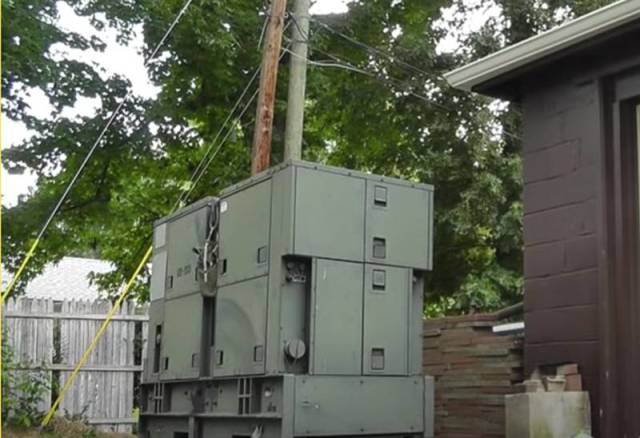
Image source: topwar.ru
Previously, the provision of warring units meant timely supplies of ammunition, dry linen, water and food. Now the military needs huge reserves of electricity to carry out daily operations. In particular, we are talking about ensuring the normal functioning of command posts, communication systems, material supply of troops. Military experts predict an increase in the army's electricity needs over the next decade.
That is why the US armed forces are developing the first ever energy strategy, which is scheduled to be presented at the end of this year. Army Minister Kristin Wormut told Defense News that the issues of electrical supply to the army have not yet been given due attention. This is very bad for modern troops, so the situation needs to change as soon as possible.
One of the possible solutions to the problems of electricity on the battlefield is the use of generators with an increased level of mobility. The C5ISR Army Center is working on the implementation of a mobile microgrid project, which will allow turning vehicles of the American army into a kind of microgrid capable of charging batteries in the field.
Another important task of the US army is to standardize batteries, because today the US armed forces use a large number of a wide variety of batteries that are not always compatible. The task is to provide soldiers with access to batteries that can be used for a variety of purposes during and after the battle.
Since the Pentagon already has a vision of the energy development plan, it's up to American business. Now the military is looking for companies that are ready to help develop solutions in the field of energy supply to the army. For example, Oshkosh announced the development of a Joint Light Tactical Vehicle, and Schneider Electric, which built a network to power Marine Corps air bases, offers to use this technology at military facilities and in the field. Plasan North America has introduced the All-Terrain Electric Mission Module, or ATeMM, which, according to the company's president John Cavedo, is a single platform that solves many problems with the energy supply and logistics of the armed forces in the field.
The device looks like a trailer, but instead of consuming energy from the car towing it, the module provides electricity generation, turning the attached vehicle into a mobile generator. The system also complements the generator power at command posts and acts as a mass mobile battery charging station.
According to analysts' forecasts, prototypes of hybrid engines for ground vehicles are likely to take part in Project Convergence, the annual army exercises of the US armed forces to experiment with new and future capabilities. Hybrid generators are also likely to appear, which can switch to quiet mode, as well as various battery charging solutions.
